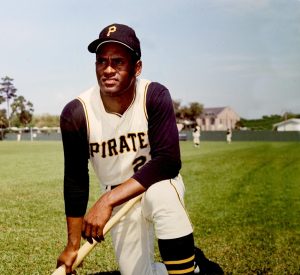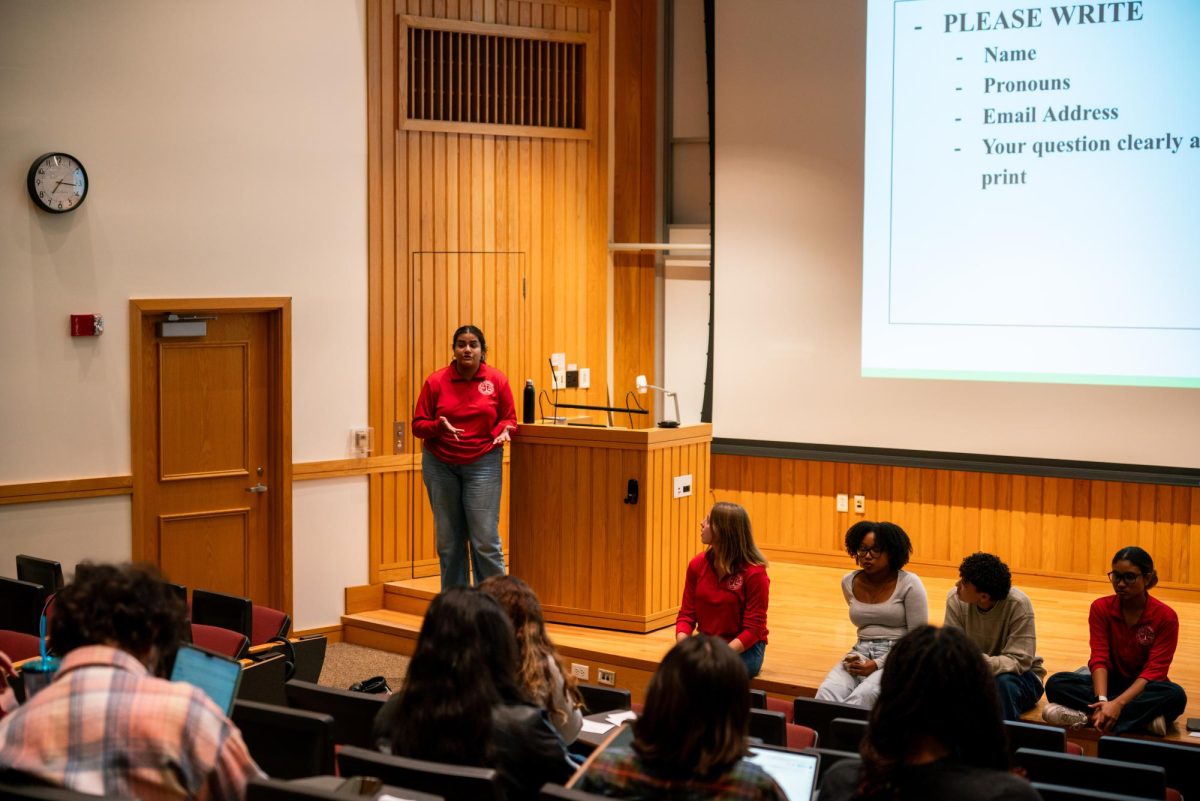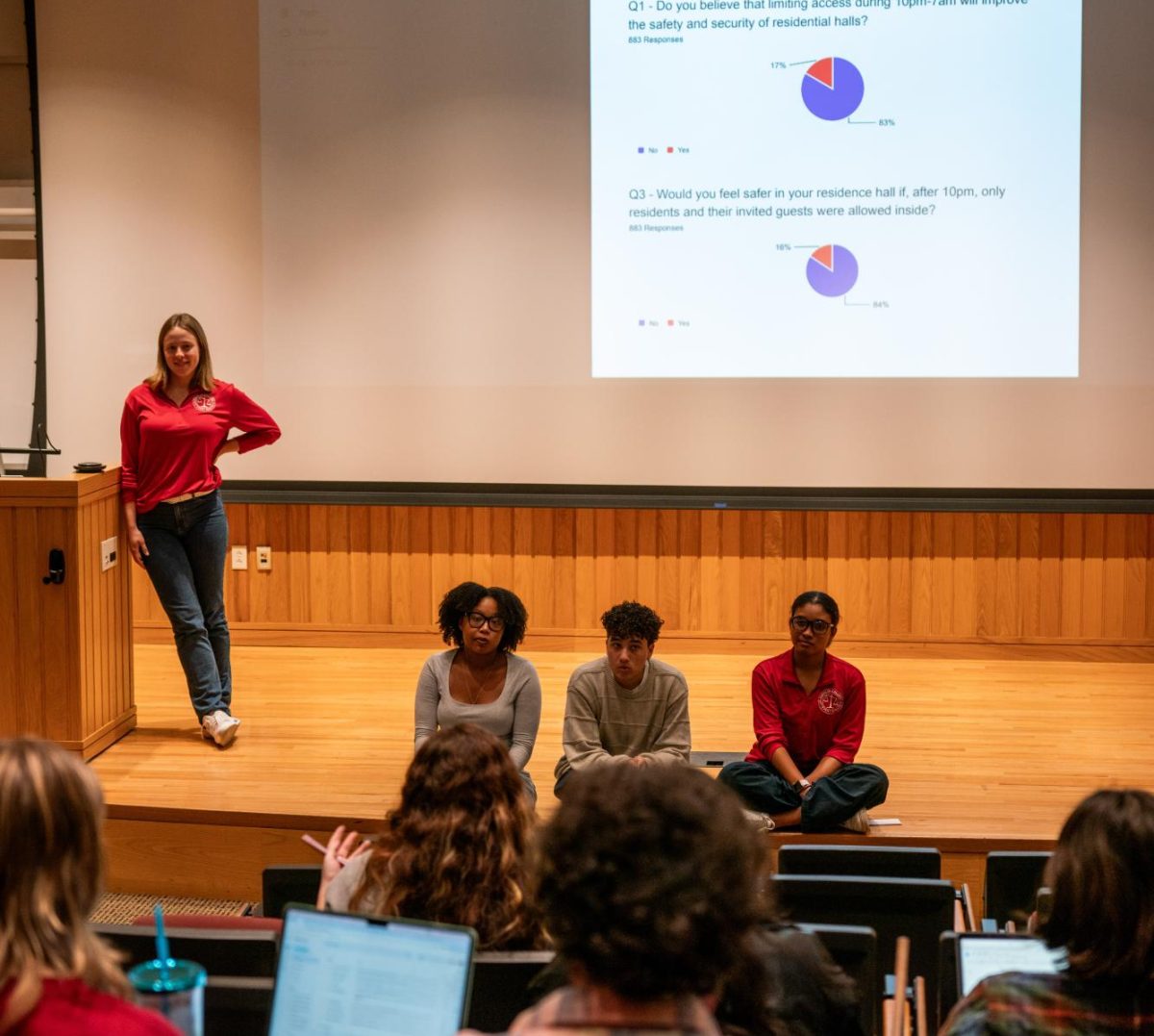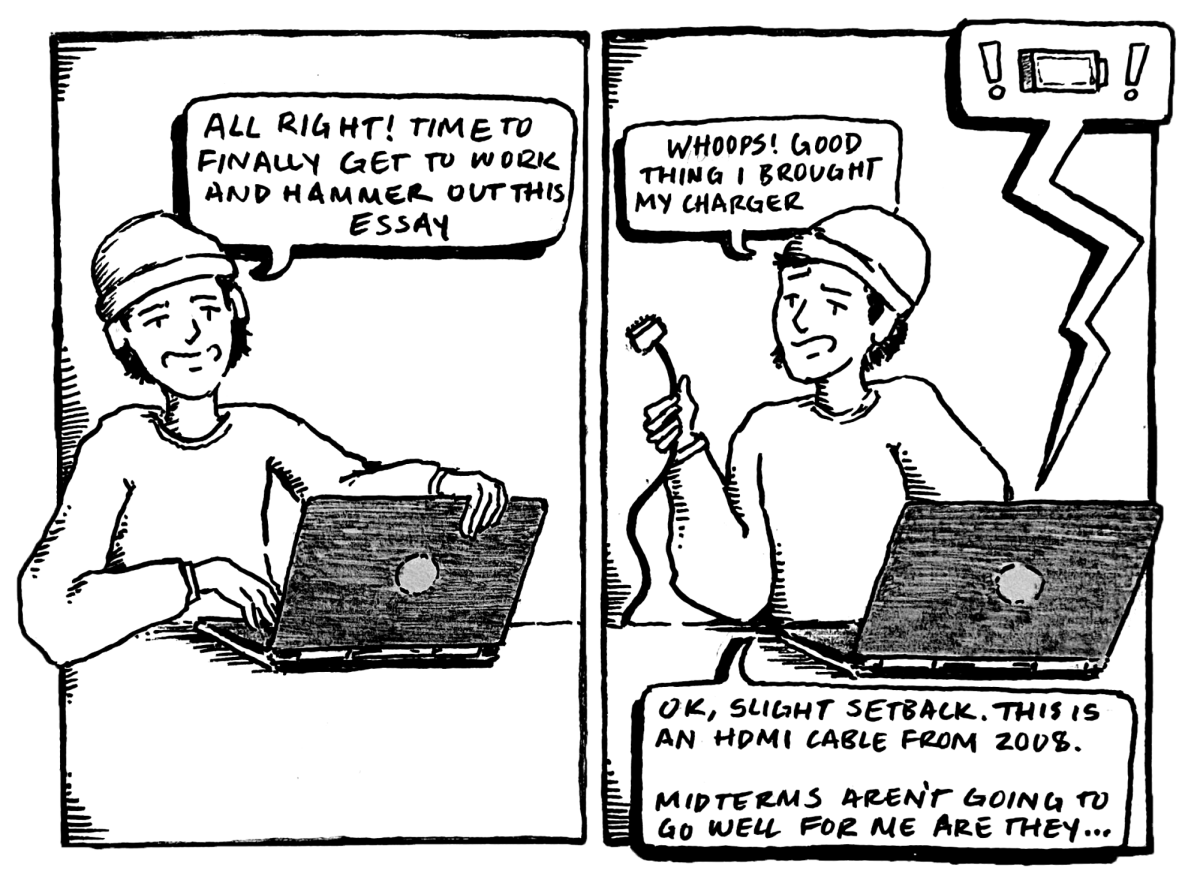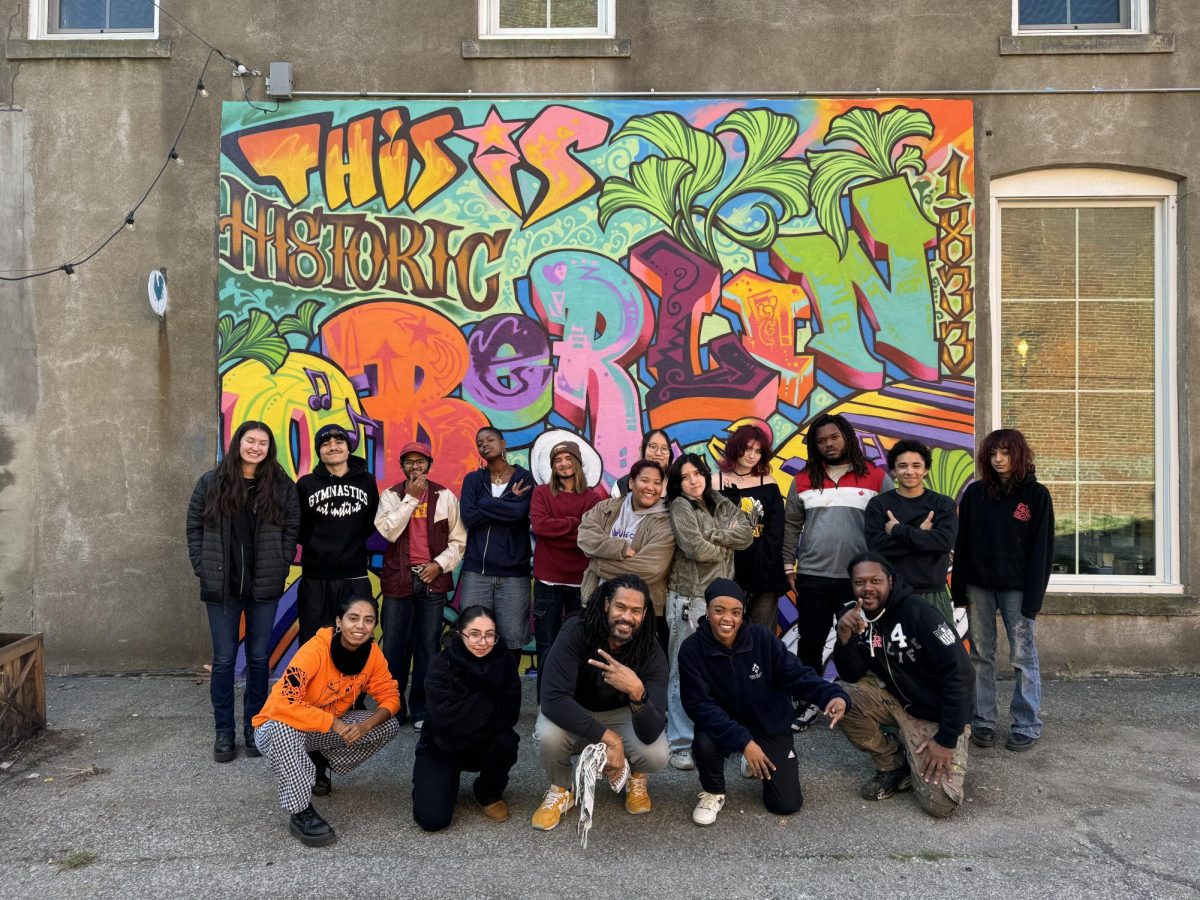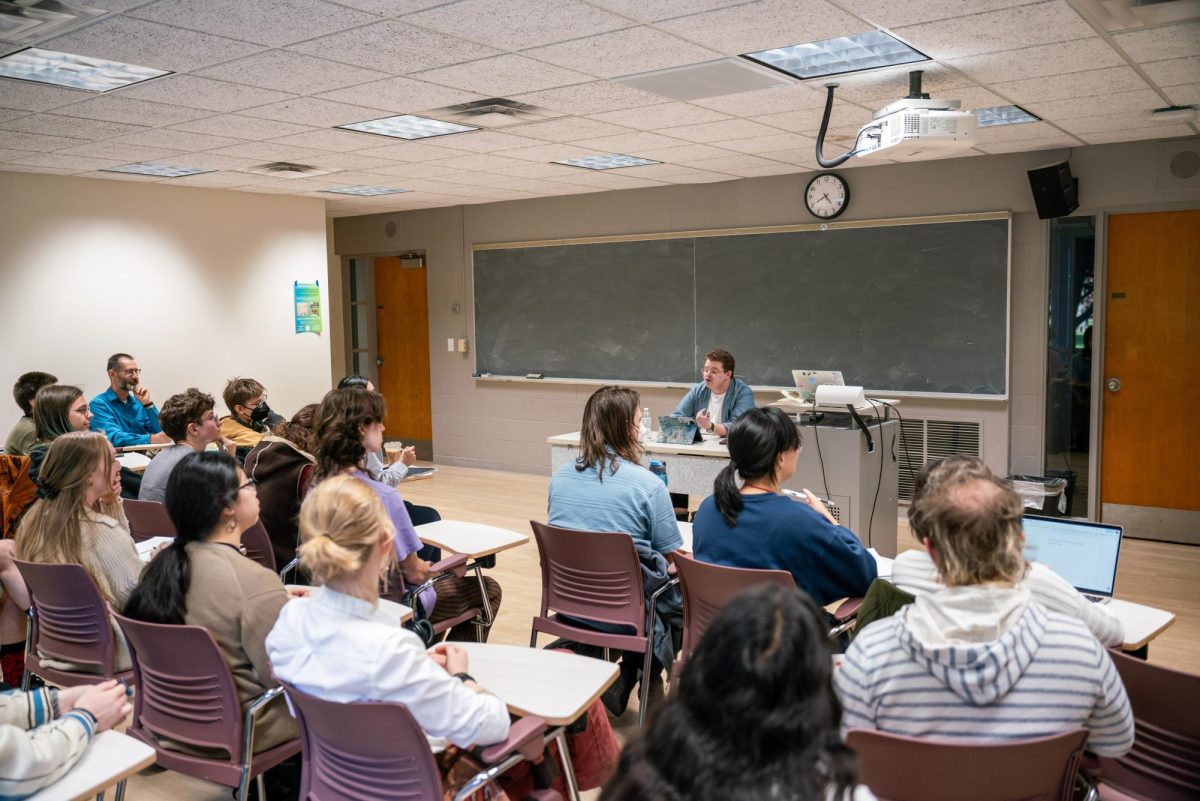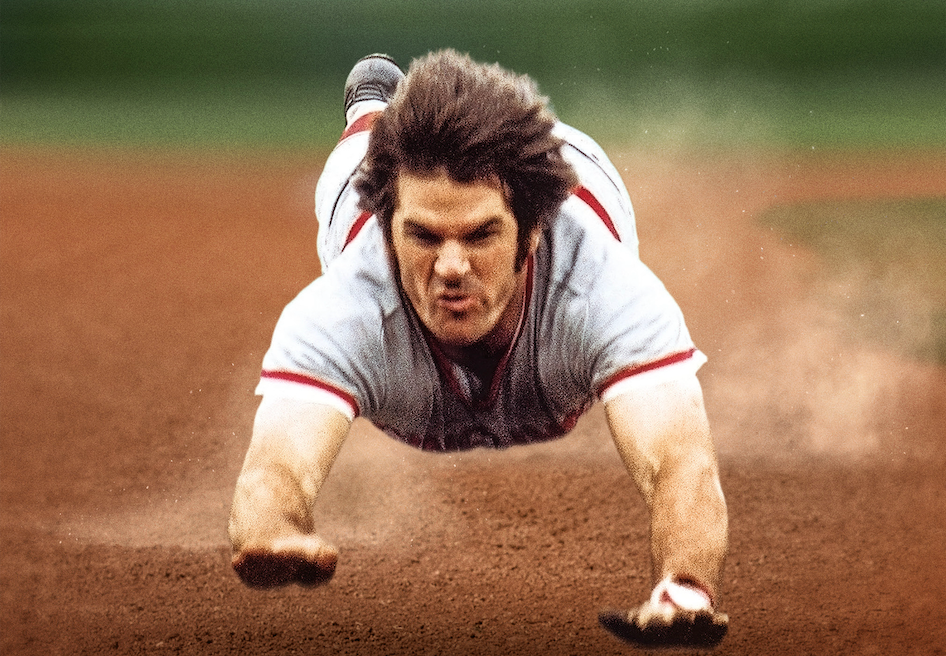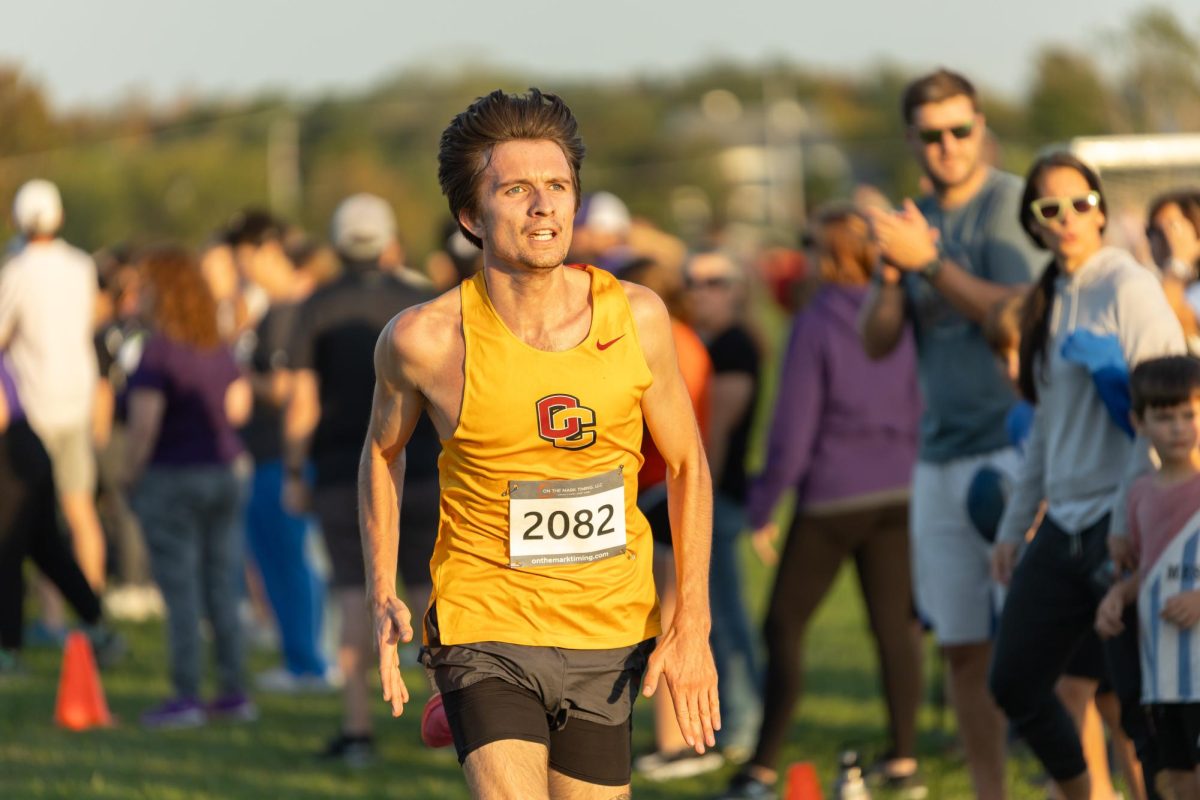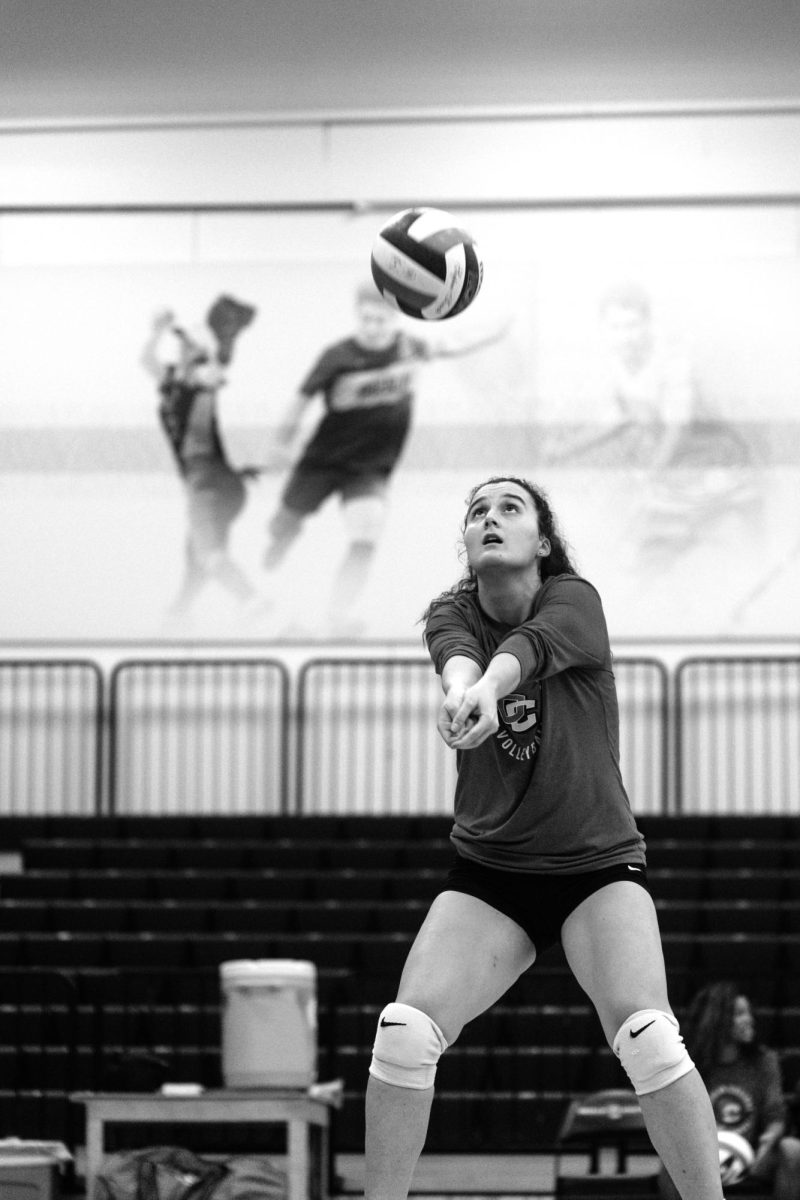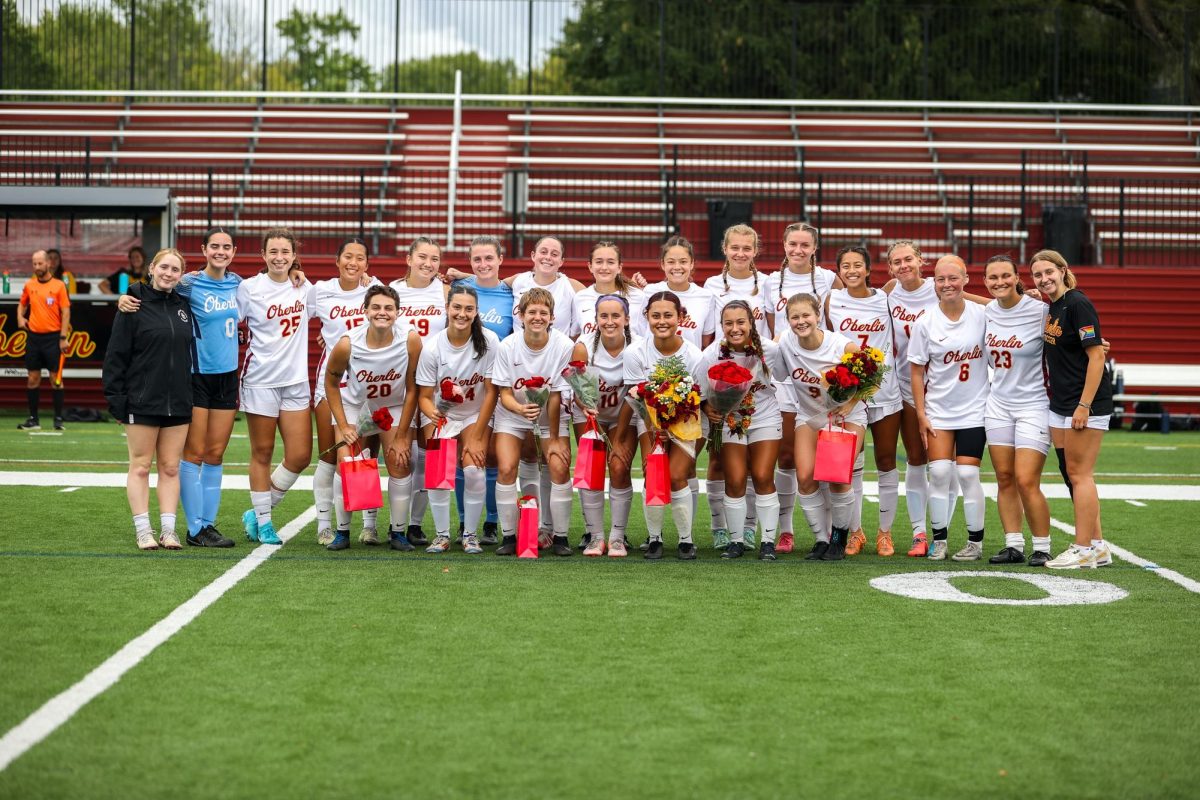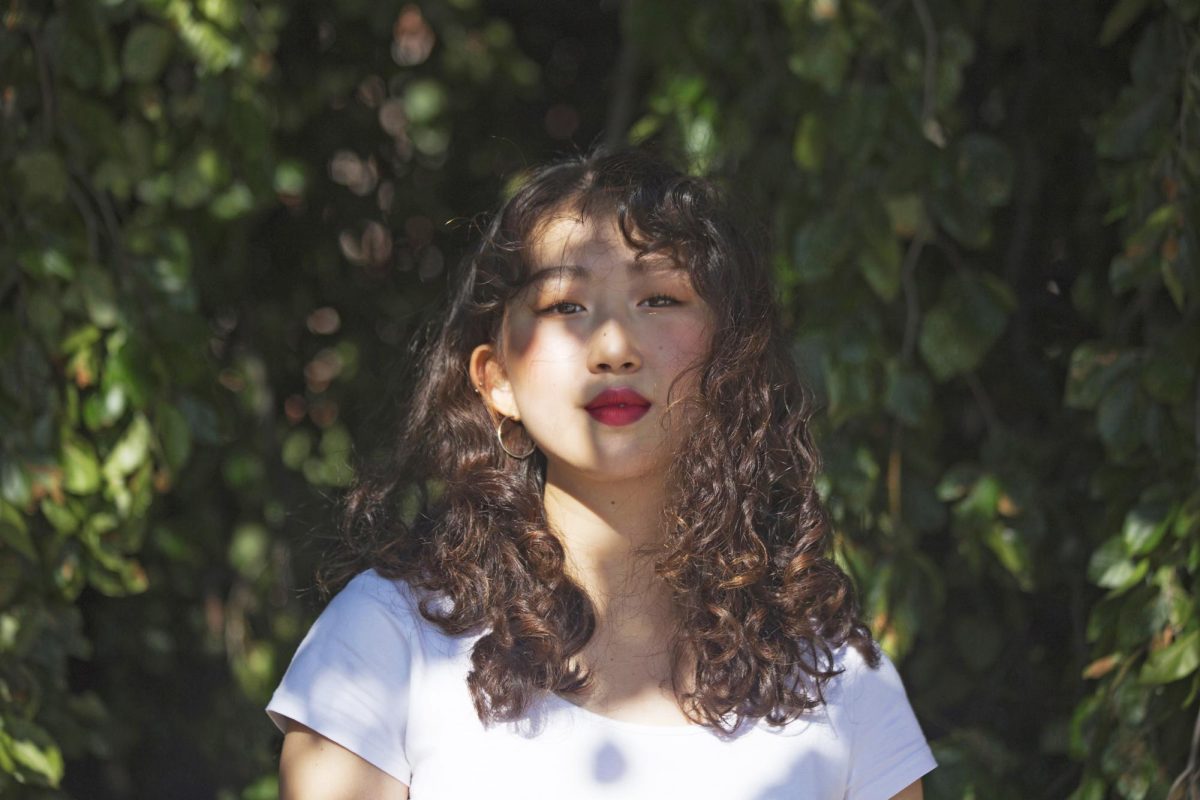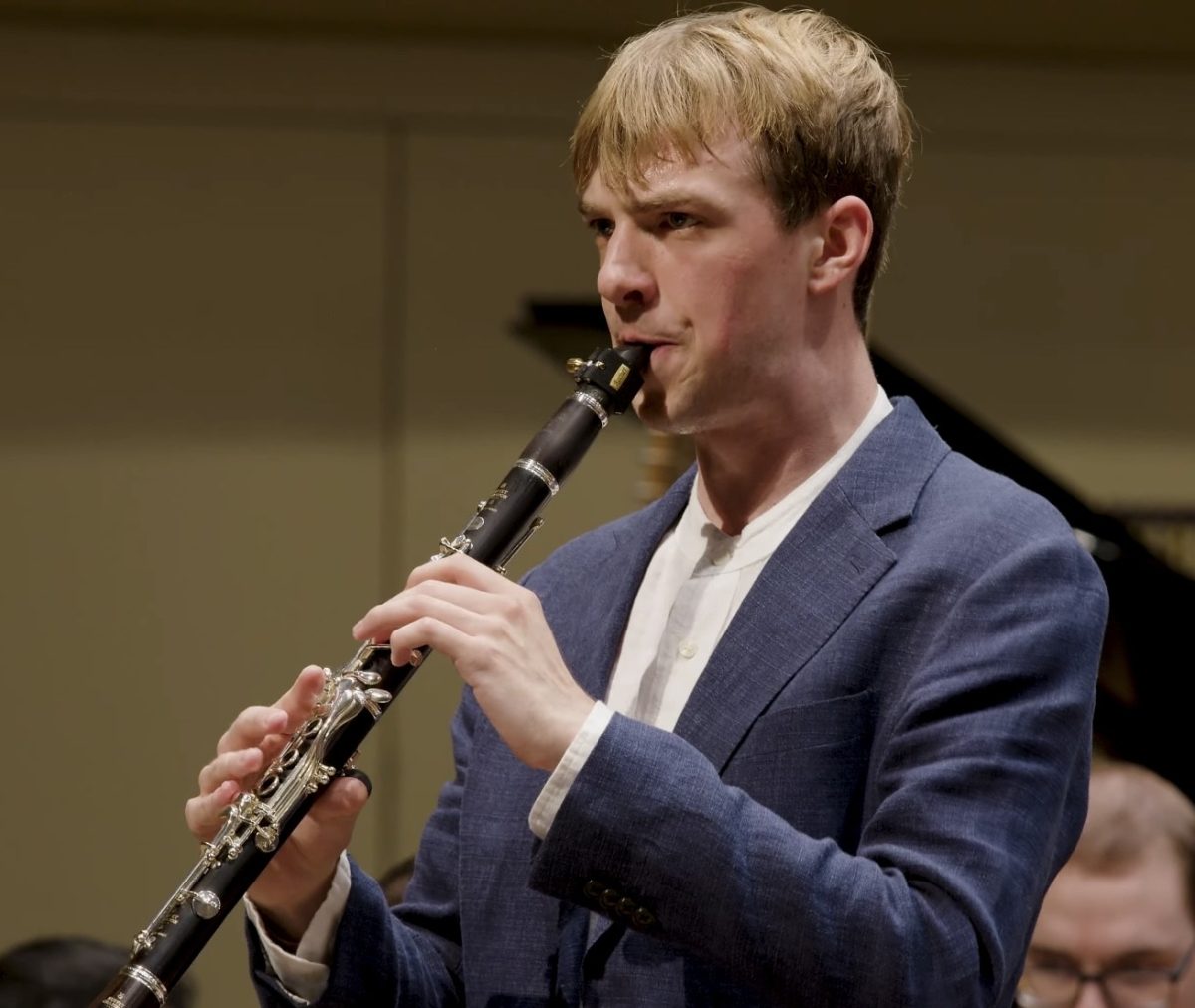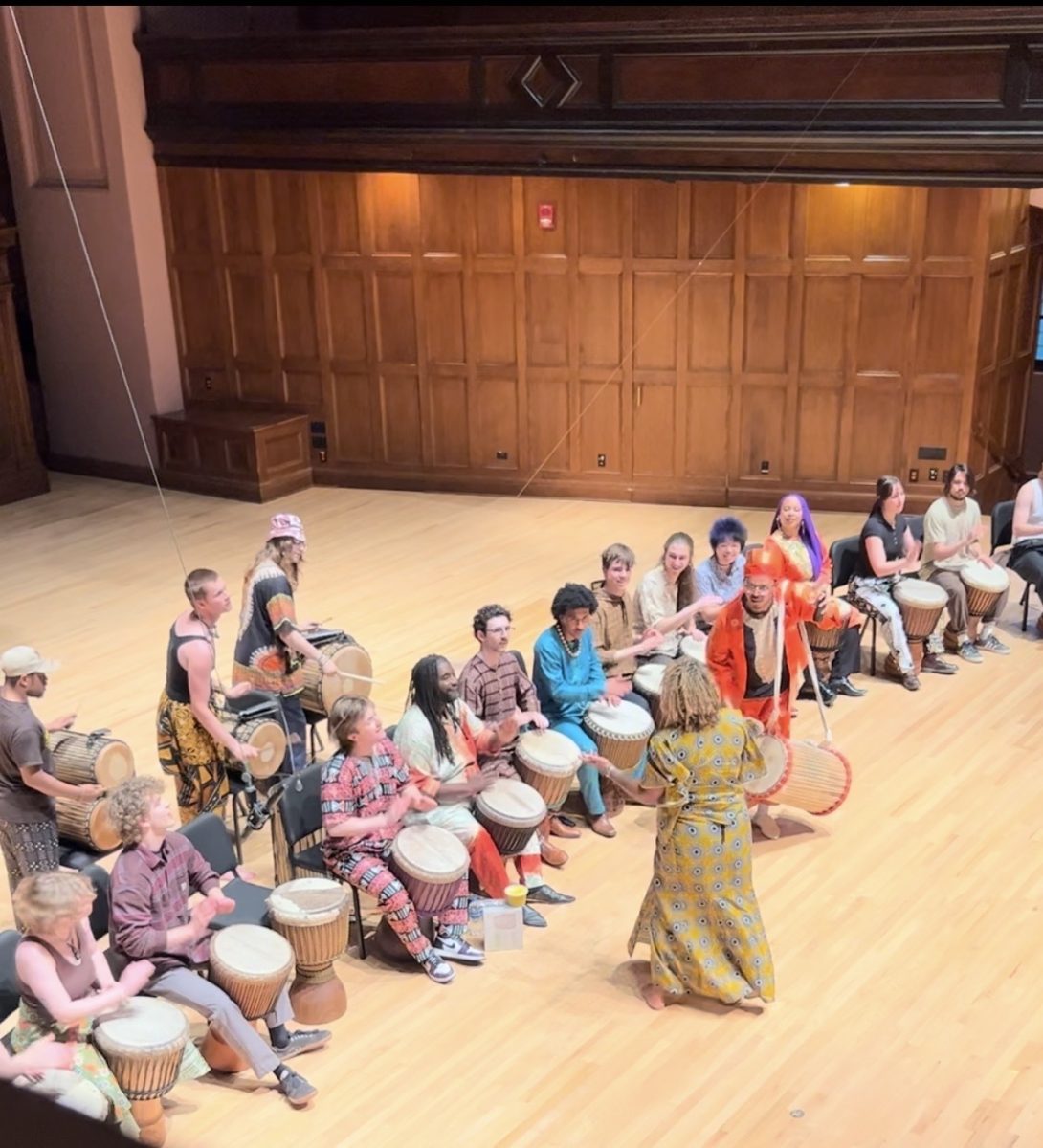Duo Delivers Imaginitive, Inclusive Multimedia Performance
October 2, 2015
Spoken word artist Alixa Garcia beatboxed on pan flute while her audience at the Cat in the Cream clapped along enthusiastically last Friday night. Pan flute music is part of Garcia’s Colombian heritage, and she played upon notions of traditional rhythm by altering the way she blew into the pipes. Naima Penniman, who performs with Garcia is the other half of spoken word duo Climbing PoeTree, danced to Garcia’s music.
The multimedia performance included spoken word poetry accompanied by music, photography and video in the background. Garcia and Penniman’s interdisciplinary work focuses on themes of social justice, and the duo seeks to inspire audience members to create change within the environments and systems they interact with on a daily basis. “Creativity is the antithesis of destruction,” Garcia said, addressing the audience. “Creativity is a nonviolent weapon.”
Garcia immediately established a welcoming atmosphere when she introduced the duo’s second slam, “Being Human,” which the two performers recited together. “This piece is dedicated to the human beings in the room. Where y’all at?” Garcia said, elevating the energy in the room before beginning; participants cheered eagerly in response. The imagery in the duo’s poem illustrated vivid personification of the environment. “Being Human,” includes nature-centric lines such as, “I wonder if rain is scared /of falling,” making it easily relatable. By giving natural phenomena anthropomorphic characteristics, the poem became emotionally accessible. The poem’s questions left room for plenty of interpretation with lines such as “I wonder if sunrise / and sunset / respect each other / even though they’ve never met.”
Establishing their commanding presence early on, Garcia and Penniman had no trouble delving into meatier topics. An excerpt from HURRICANE SEASON: the hidden messages in water, a multimedia show the duo performed, commemorated the experiences of natural disaster survivors, particularly survivors of Hurricane Katrina. The piece — which criticized the government’s failure to provide refuge and medical care to Katrina victims, as well as its invocation of martial law — proved compelling in its detail. Images of helicopters hovering over silhouetted people played on a screen behind the poets, illuminating their message about the horrors of the police state created in the wake of Katrina. This segment highlighted the connection between the environment and systems of oppression, even more intensely than “Being Human.” The line, “We sell our bodies to our bosses and our wealth to make more trash,” reflects how people of low socioeconomic status are often the people who endure environmental injustices because of systematic oppression.
Another poem memorialized Black people who have suffered from the police violence that has sparked nationwide outrage. The refrain, “Who decides who’s dangerous enough to die?” echoed throughout the piece and provided a detailed and grounding focus on instances of police violence. The piece also connected this contemporary violence to historical systems of oppression and slavery in the U.S. Penniman and Garcia chanted together, “It was legal to enslave us; now it’s legal to erase us.” These lines underscored how environmental justice is not only about who gets trash dumps built in their backyards but also about who is safe in certain spaces.
While the poem illustrated how the legacy of slavery still infects society today, it also reminded that creating art to resist such systems of oppression is a longstanding tradition. The line, “Freedom is a rap song past the white man’s plantation,” shows how music has provided a pathway to freedom and identity formation for Black people throughout history. Enslaved people’s songs contained hidden directions to help fellow enslaved people escape to the north via the Underground Railroad. Modern rap songs carry that legacy by pushing against the racism still present in the United States. Climbing PoeTree’s own work follows in this same tradition of radical resistance to injustice through creative expression.
Garcia and Penniman lightened the mood of the show with variety and humor by performing a love poem. “What’s the point of revolution if you can’t go home and make sweet love?” Garcia joked. The poem was playfully flirtatious, full of cheesy pick-up lines like, “Damn, girl. You must be tired of running through my head all the time.” Yet the piece didn’t feel disconnected from the other, more serious poems, since it still contained political messages about sex and sexuality: “I want to protest misogyny between your legs,” and “Woman created women in her own image to set her daughters free.” Juxtaposing this sexual innuendo with a rewritten biblical line places women at the center of the creation of the entire universe and therefore in a position of power.
Toward the end of the show, Garcia and Penniman presented another empowering piece that focused on the solutions that communities have developed to combat environmental injustice. “In New Orleans, morning glories have been planted to pull toxins from the land,” the poets said. It also spoke about how Detroit families have created community gardens in abandoned parking lots and how dockworkers in South Africa refused to unload explosives against Zimbabwean President Robert Mugabe’s orders. To hear of such actions was exciting. This hopeful poem provided examples of concrete solutions that have worked in combatting global injustices.
Before the show ended, the two artists encouraged audience members to take a look at the cloth strips dangling from the walls of the Cat. The duo explained that the patchwork tapestry is part of their project called S.T.I.T.C.H.E.D., which stands for Stories, Testimonies, Intentions, Truths, Confessions, Healing, Expressions and Dreams. Audience members and workshop participants were invited to write down their thoughts on a small cloth square, which Garcia and Penniman would then sew together in long strips. Some participants offered specific aspirations such as, “I will work hard to achieve my goals so that I can pay my parents back for everything they’ve done for me.” Others were simple yet direct statements: “You are beautiful,” or “I am a woman, a warrior, an eco warrior.” The collection of thoughts filling the Cat created the feeling of a space shared with many other voices, though the people who wrote the words weren’t physically present.
The words shared by these voices, along with Climbing PoeTree’s performance, fostered a sense of togetherness, an important part of fighting environmental injustices as a community. The closing words of the last poem, “Possibility is as wide as the space we create for it,” also challenged audience members to work together to imagine new solutions for societal problems and visions of the future.





